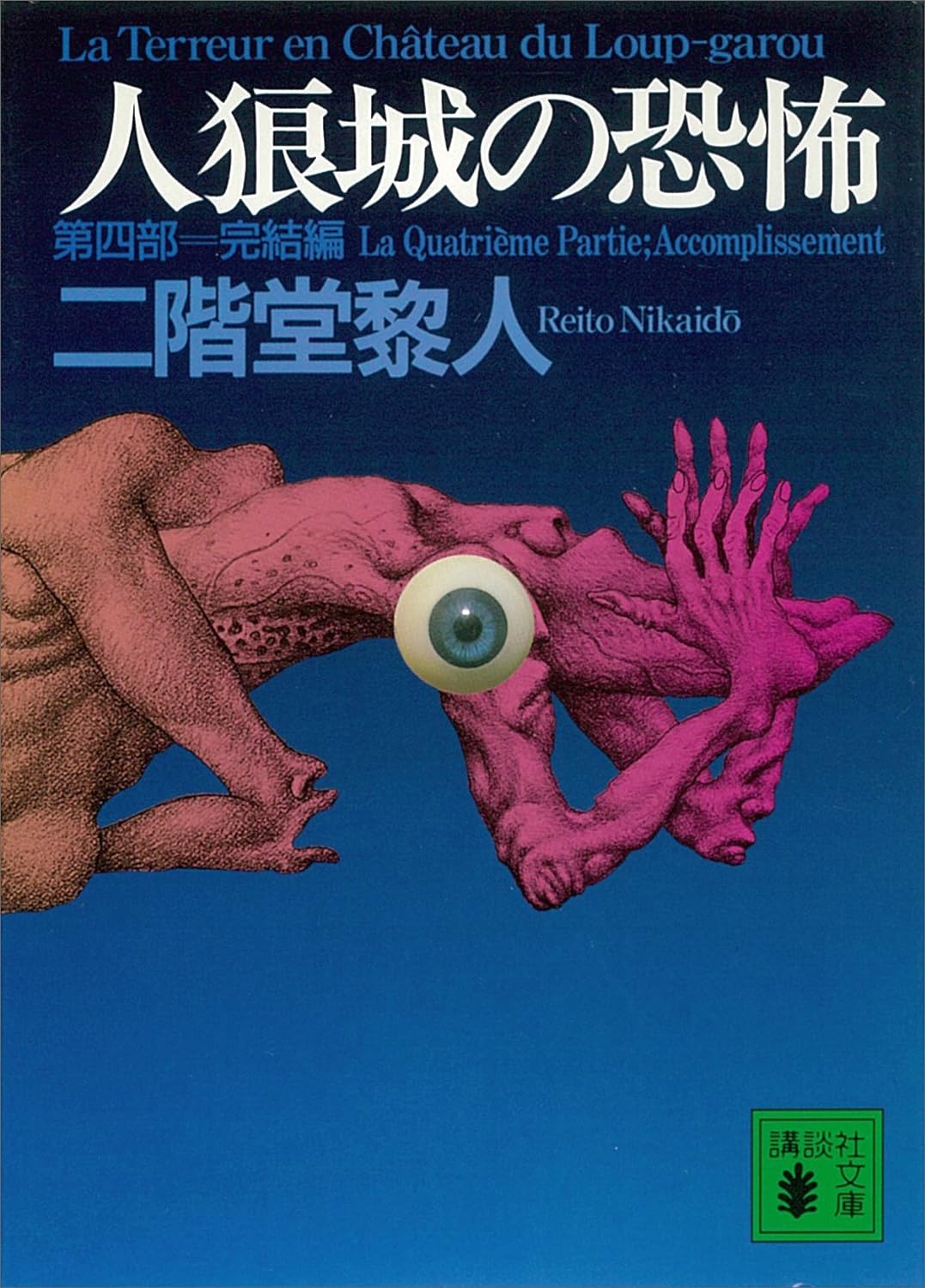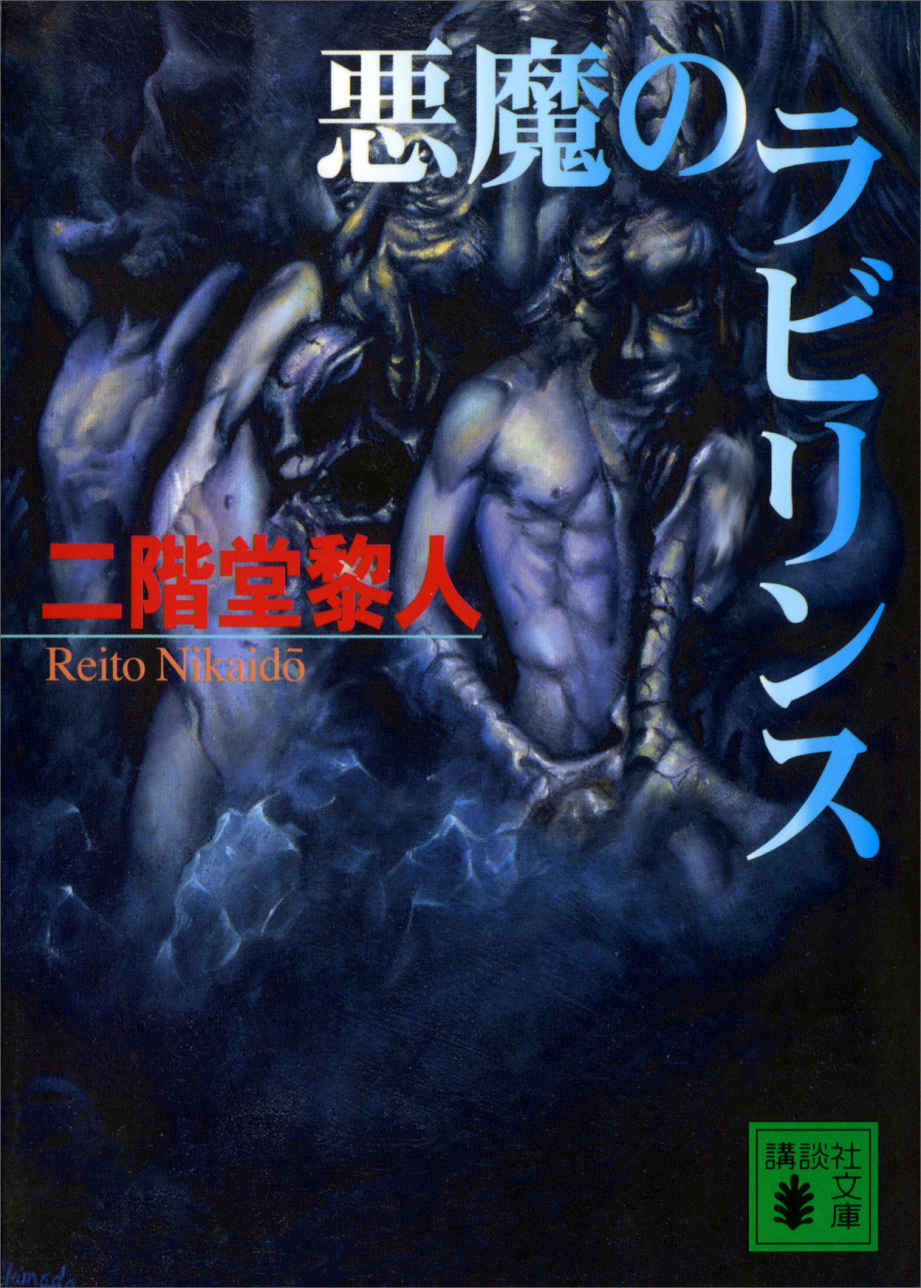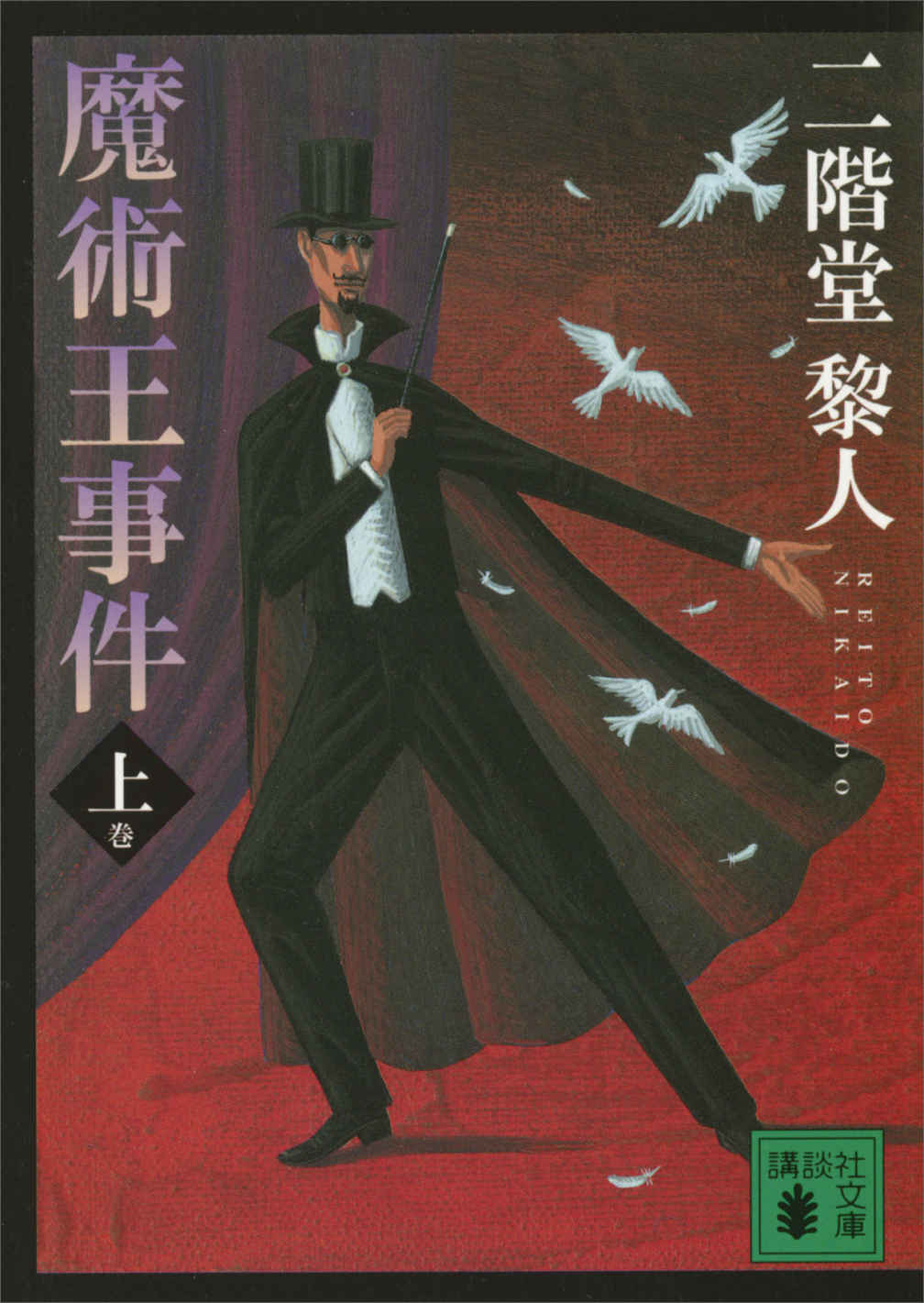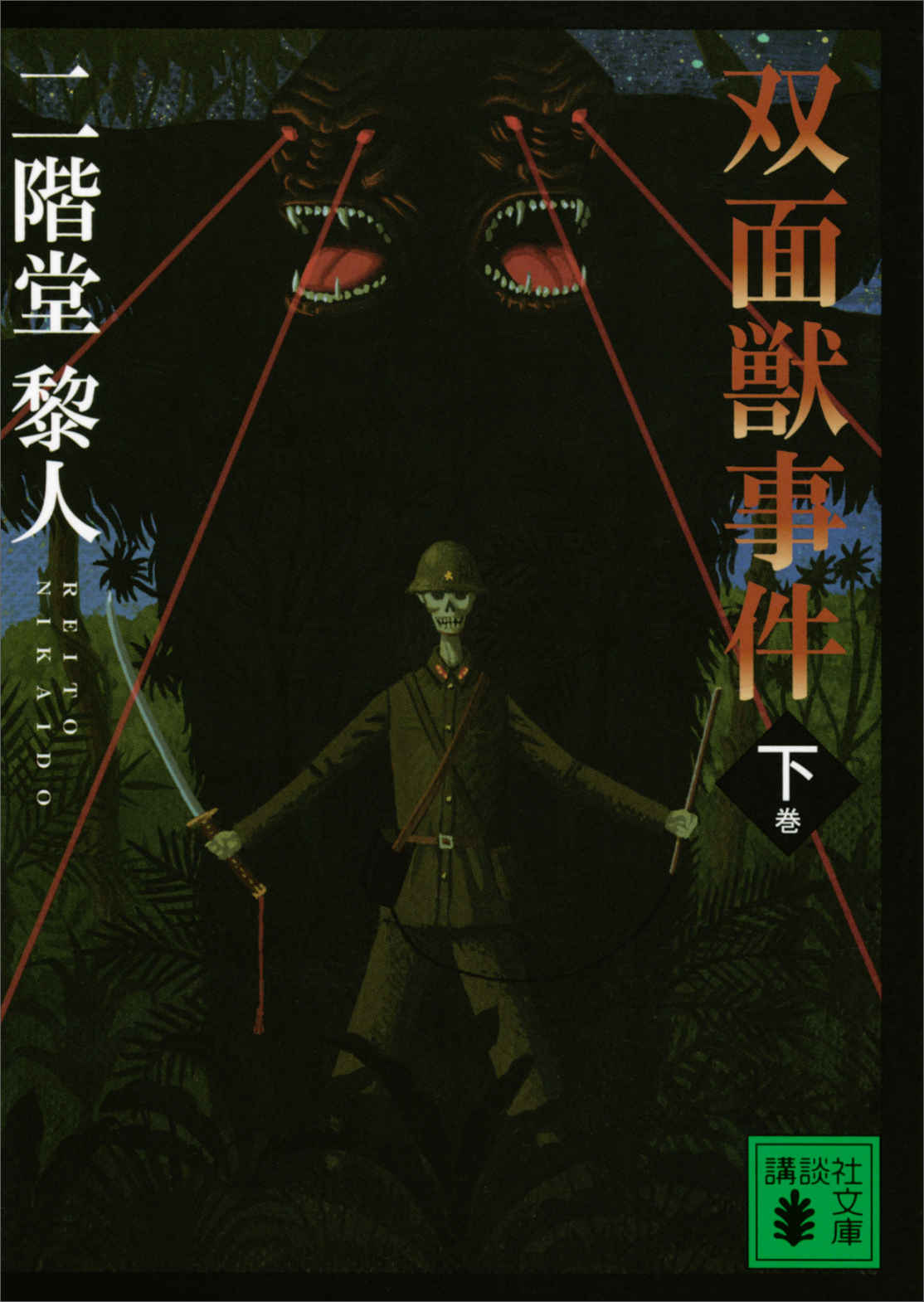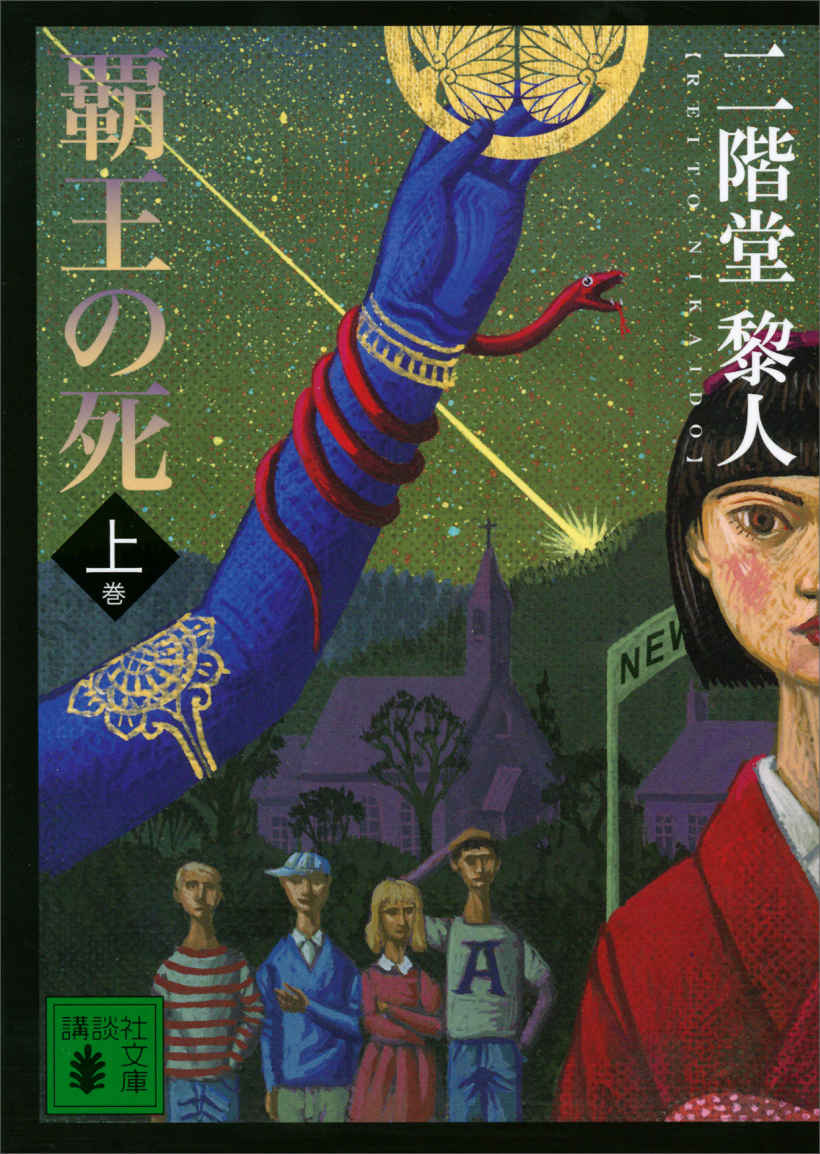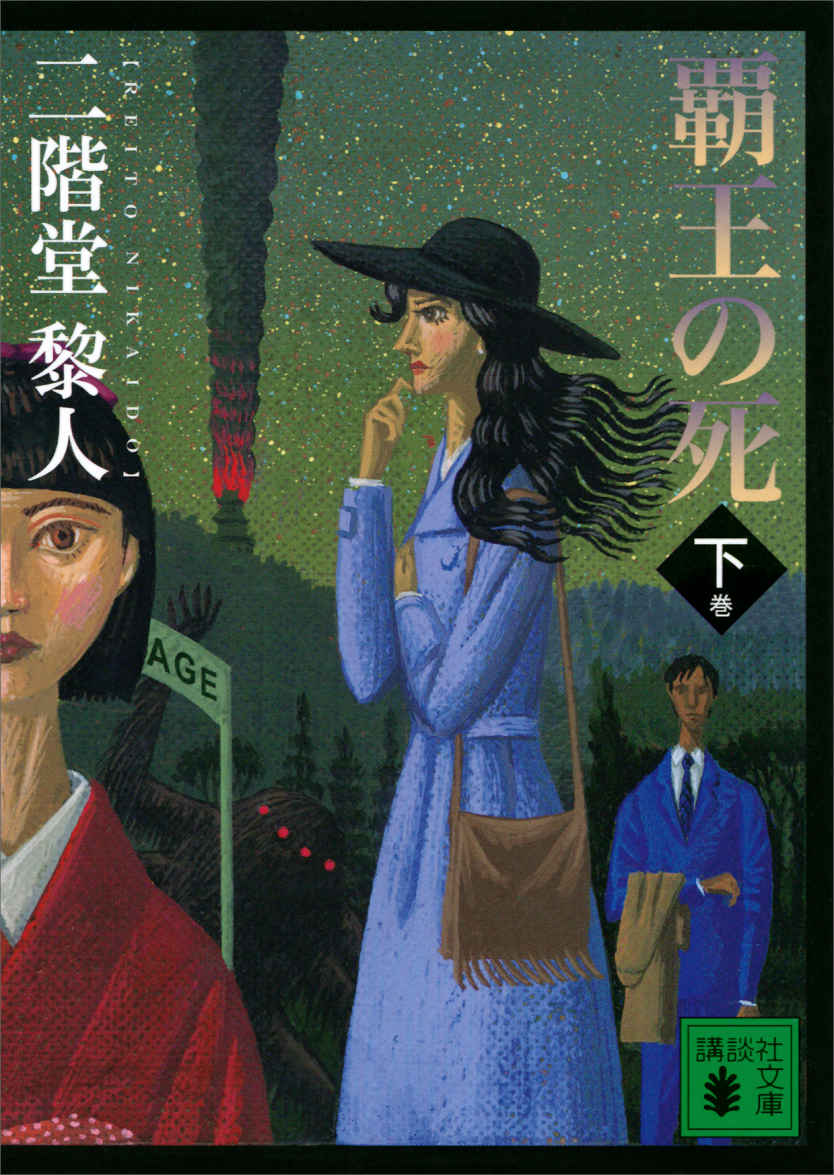The Minotaur
I’ve read five books in the past week. Eight, if you’re going to treat every individual story’s volume as a separate book.
The first was the Conclusion chapter of Reito Nikaido’s Terror of Werewolf Castle, the world’s largest locked orom mystery. Overall, the extent of my thoughts is about as large as I thought it would be: I can say it was a solid conclusion to a long but well-built mystery. Reading it was something I’d wanted to read for years now. I never actually thought I’d get a chance to, so you could say it was, to some extent, a dream come true.
It wasn’t a perfect conclusion, mind you. I think, on the whole, the motive for the entire thing didn’t really make much sense to me, and a lot of the myth-building I praised in my original post felt under-utilized. Which is to say, I liked some of my explanations more.
But I was satisfied enough to keep reading more of Nikaido. I was well-aware that his Ranko series could be split fairly cleanly into “pre-Werewolf Castle” and “post-Werewolf Castle” period; the latter enjoying far worse reception than the former. As I mentioned in my original Werewolf Castle post, I’ve actually read a pre-Werewolf work, The House of Evil Spirits, and I liked it a lot! It strikes a good balance of following the well-established structure of a detective novel, but injecting a healthy dose of horror and the supernatural into the story. One of the members of the Honkaku Discord even took the time to give me a reading list for my further reading of the Ranko series; almost all of the books, unsurprisingly, belonging in the pre-Werewolf period.
So, naturally, upon finishing the last volume of Werewolf Castle, I immediately went out and got almost all of the books of the post-Werewolf period.
Wait, what?
I guess one thing – if it hasn’t become clear already from the rest of this blog – is that I have this morbid curiosity when it comes to outliers in detective fiction. I’m not just looking for great novels, I’m also on the lookout for novels in which the author tries to step out of his (and the reader’s) comfort zone and do something different.
The post-Werewolf novels, from everything I’d read before reading them, did vaguely seem like they were trying to do that. Their period has primarily been marked by the Labyrinth saga – in which Ranko, the series detective, faces off against a master criminal simply known as “Demon King Labyrinth” (or just “Labyrinth”). A simple explanation would be that Labyrinth takes the role of Ranko’s first real arch-nemesis (although we will discuss the validity of that statement a bit later down the line).
They’re different from the previous works in that they’re not really structured as detective novels, per-se – there are certainly impossible crimes and investigations happening, but they’re far more pulpy in nature, and have a much larger focus on action and horror. But neither is, in itself, something unheard of in the overall larger scope of mystery as a genre – so what’s the big deal here? Were the novels badly-written? Did it simply fail to meet expectations stoked by the epicness of Werewolf Castle?
To be perfectly honest, I wasn’t particularly driven to answer these questions. I could see the general reviews for the works and more or less understand what had happened. There was nothing that would have led me to believe that there was something unprecedented or extraordinary here. The novels, by all accounts, were simply mediocre to bad.
And yet – something drew me to the saga, regardless. A call from the void. A hunch.
It was one that, by the end, had certainly paid off.
But let me start at the beginning.
The series opens with The Devil’s Labyrinth. It’s actually a book consisting of two novellas. The crimes themselves are separate, but the narrative running through them is tightly connected. According to this book’s afterword, Nikaido had originally planned for the entire Labyrinth series to be told as novellas and short stories, but was having so much fun writing the character that he inevitably dedicated entire novels to the villain.
Who, then, is Labyrinth?
That, ultimately, is the point of this book: to set the stage for the master criminal.
The first novella, The Mystery of the Sleeper Train Asakaze, features a very cool premise. A magician called “Devil Satan” (think, like, Umineko “Satan”, not SATAN “Satan”) has been receiving threats from Labyrinth. The magician hires a private detective agency to serve as bodyguards. He boards the train Asakaze and enters his cabin, with one of his hired detectives standing outside, keeping watch. As the train takes off, the detective sees the magician’s assistant standing on the platform.
When the train reaches the next station, the detective finds that the magician is not responding from his cabin – and the cabin is locked. He forces the door… and finds that the magician has disappeared.
In his place is the corpse of the assistant he’d seen standing on the platform.
How was this possible? The detective had been keeping watch of the cabin the entire time. Nobody had gone past him. The door was locked. There was nobody else in the cabin. The window could not open. The train was moving the entire time.
A triple locked room – locked cabin, a guard, and a moving train nobody could’ve boarded while it was in motion.
Hell of an opener. With a pretty neat solution. It’s the kind of trick, I think, the community I’m a part of, where mystery freaks solve each others’ mysteries, would’ve come up with. It very much requires you to be able to picture the events leading up to the murder – depending on how you picture the train, the solution you come up with may be more or less complicated than the one actually used. A diagram would’ve probably helped? Not sure.
The structure of this first story is is still in-line with what we’ve kind of come to expect from a detective story. Ranko is asked by the detective agency to look into the matter (and also taunted by Labyrinth to begin with). She talks to the relevant parties, investigates the train, and presents a solution. Labyrinth is, obviously, not actually caught (otherwise this wouldn’t be much of a saga, right?)
It’s not surprising, since Labyrinth doesn’t actually make a direct appearance in this book at all. There’s a prologue where Labyrinth is implied to be a woman, but we quickly learn that they’re a master of disguise and can essentially take any form – regardless of gender, race or age. Labyrinth here generally feels like a bogeyman – a shadow permeating throughout the entire book, but never making itself visibly known. Ranko and the police are always one step behind.
It’s very interesting – Labyrinth is extremely theatrical and shows off their crime prowess, but at the same time, is always in the shadows. It’s a very cool idea.
The second novella, The Secret of the Glass House, highlights this trend. Ranko and the police track down an abandoned house Labyrinth used as their lair. The house has been cleared out. But hidden in one of the house’s many secret passages, the investigators find four skeletons sitting around the table – all four had been murdered. They all appear to have been members of the Japanese military. A mystery note is left on the table, inviting Ranko to a “Skeleton Coast”… wherever that may be.
The story then transitions to a young artist who finds himself kidnapped and imprisoned by someone. From there, a chain of events eventually leads Ranko to a murder up in the mountains – in a house made entirely of glass. The house was completely sealed up, and the police initially suspect that the murderer was one of the two victims found.
Most people seem to agree that the murder in this second story is fairly uninteresting – and I’ll agree. The solution is fairly obvious. Even if you don’t know exactly what was done, you’re bound to think of at least variation of the trick used. I guess I’m also a little disappointed the glass house wasn’t, like, a house made up of completely transparent glass where you can see into all the rooms from the outside… but I guess that would’ve been too goofy. And maybe more interesting.
Mind you, I still find the story worth talking about. It’s fairly fast-paced and I was pretty impressed with how Nikaido took us from the abandoned house all the way to the glass house in the mountains. There is no real extensive investigation – things are constantly moving, and we learn information along the way. I’ll stress that it’s more about the structure that I appreciate the most here. Some of the actual plot, I can leave or take. For example, Ranko walking around the abandoned house and finding a bunch of secret passages isn’t particularly exciting.
Overall, as an opener, I’d say it does its job. Not just because the events here will be the driving force for what’s to come – but because, together, the two stories signal what to expect from the saga as a whole. Sleeper Train shows that Labyrinth is theatrical, and that you can still expect them to pull off daring murders for Ranko to solve – but Glass House introduces a progression that puts more focus on action and adventure. More importantly, can also be seen as a transition piece. Sleeper Train starts on familiar ground, focusing primarily on an impossible crime and teasing the underlying horror of Labyrinth, and Glass House flips it the other way around, making the impossible crime be just another event that takes place amidst the horror, which has now come to the forefront. The story no longer built around the impossible crime, but rather, the impossible crime is just one of the tools used to progress the story.
Let me try giving an example. Let’s say you’re reading a story where a character dies dramatically. Gets shot. The protagonist gets sad. The protagonist’s sadness drives the plot forward.
Now let’s say that instead of getting shot, the character is found murdered in a locked room.
The locked room itself serves very little consequence for the actual plot – the protagonist will still get sad and proceed to do the same things they were always going to do – it’s just that, on top of that, the murder method happened to be a whole-ass impossible crime instead of just a gun. As I said, it’s a tool – something in the enemy’s arsenal. It’s not the point of the story.
This is true for all of the Labyrinth books. In my opinion, it’s the saga’s most defining feature and, to some extent, its greatest weakness. Because Labyrinth just “attacks” his enemies with locked rooms, you’re often left wondering why the impossible crimes are being used at all. Throughout the series, almost all of it is just explained away through Labyrinth’s inherent cruelty. Which is, on paper, would be fine – up until the point where the impossibilities become so grandiose and over the top that you’re left a little sad there was no “good” reason behind it.
I think this understanding leads us decently into the second book – The Case of The Sorcery King.
A family is tormented by an illusionist calling himself “The Sorcery King”, who taunts, attacks, extorts and ultimately murders on his quest for revenge. And let me tell you – he murders a lot of people.
Not gonna lie – I love the guy.
Look at that cover. Look at that “see-if-I-give-a-fuck” look on his face. This guy’s the true distillation of the Sigma Grindset. First, he’ll take your girl. Then he’ll slice her in two right in front of an entire crowd of people who think it’s just a performance. Nobody’s freaked out? Alright, no problem – he’ll take his assistant and start cutting her up, too. Here’s her leg, catch. Not enough? Fine – he’ll take your former girl (who is also, uh, your cousin? Bro…) Then he’ll put your girl-cousin under a giant fucking bell in the middle of nowhere without ever moving it. How did he do that? Fuck you. Just for even asking that, he’s gonna kidnap you, trap you in the dark, and make his head ten times the size of his body. Then he’ll leave you there to contemplate and wander the rooms. When the police eventually find you? Guess what? One of the rooms disappears. Boom. Got you. Enjoy thinking about that from your hospital bed. Oh, and by the way? Remember that girl he put in that bell? She lived? No problem. He’ll attack her again, in a perfectly guarded hospital room. You won’t even see him coming. He’ll kill like two more people while he does it.
And he just keeps doing that kind of shit until the book ends!
What a despicable bastard. He’s great.
By the way, the “you” in that rant is a guy called Etsuo. During a magic show, his fiancee is sliced in half by the King in front of everyone. And his cousin, Kimiko, is kidnapped. Etsuo in particular has it rough – constantly trying to protect the people he loves, but being broken and humiliated by the King at almost every step of the way.
Etsuo and his family’s suffering is matched only by the detectives also desperately trying to stop the King. Ranko appears in the book’s prologue and only returns to stop the bloodshed at the very end, since throughout most of the novel, she’s busy with another case (…which we’ll get to shortly). As a result, the story is essentially a series of “episodes.” Each episode is focused around one of Sorcery King’s daring crimes and the detectives as they try – and fail – to stop it from happening.
A lot of it reminded me of Rampo’s The Golden Mask, in which the story primarily consisted of episodes where Akechi went against the titular Golden Mask. It actually feels like Sorcery King almost directly invokes it, since the King does wear a golden mask himself at multiple points in the story. When it comes to the episodic structure, Golden Mask’s are, admittedly, generally self-contained, with the incident being explained before the episode ends. But even though Sorcery King’s crimes are all only explained at the end, I would say that, to some extent, this level of isolation similarly applies here. The stage of the crime is set up, the crime is committed, the investigation is performed, and things move on. There’s not a point where a later episode will reveal something important about a previous one.
This structure makes the story move constantly, making the two volumes pass by fairly quickly. The King is having a blast and, frankly, you probably are, too.
…But, as a result of the isolation, you’re kind of bound to catch onto what’s going on way earlier that Nikaido probably intended, I’d say? There’s one crime in particular that is so seemingly daring and impossible, that it inevitably puts you on the right trail of figuring out how the King is doing this. And because, by that point, you’d have already caught onto how the episodic structure works, you know that, later down the line, there won’t be any reveals to change the conditions of the impossible crime. So your first instinct will likely be the correct one.
As for the tricks themselves… they’re okay.
I’ll admit I saw through most of them before their respective chapters ended (with the exception of one pretty good one). I’m not going to dwell too much on this point, though, since I inherently understand that the structure of the story limited the scale the tricks could’ve gone to. It’ll sound strange, but the tricks themselves don’t really feel like the point here. Instead, it’s the sense of wonder and mystery that seeing these crimes being pulled off instills. Your enemy is a magician – and you’re watching a magic show. While you will be shown how the tricks are done, understand that the purpose lies in seeing the magic.
I’m now getting a bit sidetracked, but a question has occurred to me – in an impossible crime story, or any mystery: can the question carry more importance than the answer? Normally, the answer is the lens through which a mystery story is most commonly judged – it carries the power to actively change the entirety of the story – sometimes properly defining it for the first time – all through retrospection. The answer give a clear picture of the events. The answer finally puts all the characters into focus. Depending on how good it is, the answer can essentially change the quality of the question. But are there situations where it doesn’t have that kind of power; where the answer is less important to the story and the reader’s experience compared to the question?
That isn’t to say that the answer shouldn’t be given. The promise of the answer is what makes the questions so engaging. But if the majority of the reader’s time – most of the reader’s experience – spent with the book is with the suspenseful and mysterious crimes, are we saying that the suspense and intrigue – arguably the stimulation and the entertainment the reader received for 300 pages beforehand – can necessarily be entirely nullified through a lackluster 30-page solution?
To be clear, in a perfect world, a solution enhances the journey and adds to what was experienced. I’m mostly just musing on what exactly makes mystery fiction entertaining to begin with if broken down into these two parts – a lot of it certainly is a case-by-case basis kind of thing (to the point where some works cannot, or should not, be divided in this manner to begin with).
In my mind, Sorcery King is a work about a series of murders, which manages to have almost all of its entertainment stem from seeing the mysterious crimes happen. The solution – from its delivery to its contents – is fine, but it’s not something I’ll remember the work for, nor will I judge its quality based on it. I think that’s a notable achievement in its own right. Because pulpy as it is, horror-filled as it is, it still firmly rests in the detective novel genre.
There’s quite a few other things worth talking about when it comes to the relationship and importance of questions and answers in mysteries, but I think I’ll leave it there for now; there’s probably a better book to use as a centerpiece for the discussion.
Unfortunately, whatever enthusiasm I had for Sorcery King cannot be shared with the third book in the series, The Case of the Two-Faced Beast. It is the least-favored among Nikaido’s work, and, God help me, as much as I tried to like it, and as clearly as I can see what he was going for, I simply can’t.
This is the case that Ranko was investigating during the events of Sorcery King – the two novels essentially take place at the same time.
You may have noticed something. I had spent so much time talking about Sorcery King, but never once mentioned Labyrinth. What’s up with that?
In Sorcery King, Labyrinth is still largely in the shadows. He is clearly working with the illusionist, but the extent of his involvement – whether he’s an active accomplice or just a patron – isn’t really clear until the end of the story. As a result, most of the focus is spent on just dealing with the threat of the King.
In Two-Faced Beast, however, the focus is squarely on Labyrinth. This is where that abandoned house from the first book comes back into play – Ranko heads off to track some furniture that was moved from the house right before the police zeroed in on it. The search eventually leads to her coming across two incidents at two nearby islands:
In one incident, a mass slaughter happens in a medical center. In the other incident, an entire village is slaughtered. Ranko is convinced Labyrinth is somehow involved in both.
In both cases, the victims are torn apart – quite literally – and there’s clear evidence that some kind of a beast was present in both scenes. And it’s not just the evidence that speaks – a bulk of the narrative consists of stories from people who had come into contact with the beast, either was part of these incidents or further back in the past. In fact, the book opens with a story of a woman dying from cancer: she recounts how her village, located on an island as part of a military facility, was slaughtered by massive gorilla-like beasts with four arms and two faces. The beast, according to her, also had supernatural powers – red eyes that could set people on fire if the best looked at them, and a yellow breath that would kill anyone who inhaled it.
Reading this summary, you may be inclined to believe that this is something like Soji Shimada’s Vertigo: records of a completely impossible story which the detective will, at the end, unravel and provide a reasonable explanation for.
Yes and no. While Ranko will untangle parts of these narratives and explain that not all of the events were as supernatural as expected, the fact is that the Two-Faced beast described in the narrative actually exists.
Now, let’s be clear! That’s not a spoiler! The book makes it clear fairly early on that these things just kinda have to be real. There’s no real way to explain even the first narratives without assuming as much.
Let’s be even clearer! The Beast being real is not a problem! I knew going into this book that, unlike Sorcery King, Two-Faced Beast DID make a significant departure from a detective novel. It is, at its heart, a horror story. Ranko is there investigating, sure, but only in the way that she was poking about and discovered secret passages in The Secret of the Glass House. She constantly moves along, following the trail of the story.
The problem is that the story isn’t that good. I’ll admit it starts out promising enough, because it focuses on the stories of the survivors – the unique circumstances in which they came across the beast and the terrible things that happened to them. One story in particular – where a young man recounts living on an island with his mad scientist father – is probably the highlight of the story. It’s mysterious, it’s tense, and it has a decent pay-off. I’ll admit – for the first half of the first volume, I was really on-board. I thought that people might’ve been too hasty to judge the novel.
After all, this structure could still lend itself to being a mystery novel in the long run – you’ve just traded in investigation and talking to the suspects with horrific events. Ranko may not catch any human murderers, but she may still deduce some other things hidden in the stories that go outside of the focus of the beast.
If that was the intention, though, the book falls short. The testimonials are a lot more engaging than Ranko’s section. The latter often feels like it isn’t really driving the story forward or features the cast catching up on information the reader would’ve already known because they’ve already read the testimonies.
The testimonies in general felt like they were moving the story along. That’s where most of the real action took place. When Volume 2 ran out of them, things started to feel pretty sluggish.
As I mentioned, Ranko does make a few deductions, but they’re not very entertaining. The primary reason is that the story never really establishes firm boundaries on what we should consider rationally possible and what we shouldn’t. The two-faced beast exists. Brain transplants are possible. There are zombie-like soldiers who resemble husks. Labyrinth, as it turns out, is some kind of an artificially created human born through the same crazy World War 2 experimentation.
But then – and I’ll use ROT-13 to give the example – Ranko deduces this:
Gur ornfg’f erq rlrf pna’g npghnyyl frg nalbar ba sver. Ab, ab. Vafgrnq, gur zvyvgnel unq qrirybcrq n ynfre evsyr gung fbzrbar whfg unccrarq gb fubbg ng crbcyr jurarire gur ornfg jnf nebhaq, guhf frggvat gurz ba sver.
How were we to know to question that specific element, and not the other stuff? How were we to know that the provided explanation was even rationally possible?
I see the glimmers of what the story could’ve been. There’s a lot of talk about the atrocities of the War and human greed, the amoral pursuits in the name of science and progress, all wrapped in the hatred Labyrinth feels towards humanity as a result of – the fact that they were born to begin with! The mass deaths that occur on these islands are continued echoes of these atrocities.
It just doesn’t land. I’ve been thinking about what could’ve been done differently and the only idea that I keep coming back to is the idea that Ranko shouldn’t have been in this novel at all. She could’ve made an appearance at the end, maybe, to clear some things up, but fundamentally – if you wanted to have a protagonist trying to achieve a goal and intersplice it with these horror narratives – then, in my mind, that protagonist should’ve been Labyrinth. You trim the story down, you have the story follow Labyrinth’s point of view as they meddle around the islands trying to get their revenge, we learn more about their past and are in a firmer position to understand what is and isn’t possible in the story, and then, at the end, Ranko finds out about everything and reveals that some things weren’t as they seemed. She maybe even gets a clue as to what Labyrinth will do next.
The story itself proves how much more interesting this could’ve been, because one of the testimonies is, in fact, from the point of view of someone helping Labyrinth – and it is infinitely better to see the steps Labyrinth takes and how they tie into the other testimonies.
I feel like it could’ve been a nice little twist, in-line with the large departure the novel already takes.
Oh, well. It is what it is.
If you’re reading the saga, I think having the knowledge that this book exists and this rough summary is probably enough to safely skip it. It’s never fun to… not have fun, but everyone misses once in a while, I suppose.
Now we must come to the finale of the Labyrinth saga – Death of the Ruler.
The novel takes place in a remote region of Makai Valley. The ruler of the valley, Daisuke Ouchi, is rumored to be on his deathbed, and, given that he has no male heirs, a search for distant relatives is put together. Shunji Aoki, a man who, as a result of bad choices and even worse luck, is homeless and penniless, gets involved in a crooked lawyer’s nefarious scheme: he intends to send Shunji to the Valley in the guise of one of those distant relatives. The real one has already died, and the lawyer is convinced that, with enough preparation, Shunji will be able to take the position as the ruler and seize what remains of the Ouchi family wealth. More importantly, Shunji will also be in a position to freely search the valley for a long-hidden treasure.
There’s rumors that some dangerous criminal known as the Demon King Labyrinth is in the area and wants to kill Daisuke.
It’ll probably be fine.
In parallel to this, we follow the story of a town located near the valley. It’s called New Holly Village, and is primarily populated by American missionaries. A group of four kids starts noticing that everyone in town has started to act strange. People have turned unfriendly. Stopped coming out of their homes. A kid in town is said to have eyes that glow in the dark. Someone else has seen a beast with four arms wandering around at night.
The kids go to consult with Old Man Harry, a loner who serves as the town’s de-facto librarian. When they arrive at his shack, however, they find it locked. Peeking through the window, they find that Harry had seemingly hanged himself.
The kids, however, see something far more terrifying – next to the shack is a large tree. Two headless corpses have been skewered by its branches. It doesn’t seem like a human being could’ve easily done something like that. It appears that the two victims were two town exiles. It is suspected they had tried to steal a Devil’s Book sealed in the town library – and something had punished them for it.
A large portion of the book follows the events in New Holly Village. In addition to the children, who serve as the primary “investigators”, we also have something similar to the testimonials in Twin-Face Beast: chapters from the perspectives of individual townspeople, describing the horrifying things they start to see around town. This is not just strange – it’s downright fantastical. Demon possession. Angelic spirits. Humans with deformed bodies walking through people’s front lawns. Aliens planting control devices into the water.
Wild stuff.
Shunji, meanwhile, arrives in the valley, playing his part. There is a chance that he won’t be picked for the ruler, and spends most of his time trying to get as much information as possible about where the hidden treasure might be – he might not get the family’s money, but if he can find the treasure, he and the lawyer will be rich beyond their wildest dreams.
I’ll admit this section of the book lacked some suspense. For a story about impersonation, there’s very little tension as to whether or not Shunji will be found out – mostly because nobody really knew the man he’s impersonating. He also ends up waiting a long time to even get a chance to enter the ruler’s castle, comparing himself to K from Kafka’s Castle on numerous occasions.
Thankfully, although split into two volumes, this novel is far shorter than the previous two, so these sections, while sometimes dragging, weren’t that big of a deal.
Especially since things do pick up once Shunji actually enters the castle. We find out why Labyrinth is around the valley, and the backstory of the previous two novels is fully tied together.
Labyrinth eventually makes his move, leading to a locked room murder. I won’t get into too many details, since it happens pretty late into the story.
Ranko, of course, eventually shows up.
I should tell you that I’ve left out an important piece of information when I spoke about the earlier books – those all took place before Werewolf Castle. This novel, on the other hand, takes place three years after. It’s first story set chronologically after Werewolf Castle. We’re told very little about what happened in that time – but you’re certainly given enough to mull over.
Ranko appears fairly late into the novel, long after the storm had passed. The mysteries of the valley are solved, and the Labyrinth case is put to rest. One way or another.
On the whole?
I kinda loved this.
…But not for the reasons most people would have. In fact, I can see how most people would consider the book to be mediocre or just flat-out disappointing. At the very least, I can assure you it’s far above the Twin-Faced Beast in terms of quality.
In a way, this almost seems like a better-crafted version of what Nikaido was trying to do with Two-Faced Beast. You got a bunch of crazy shit going on one hand, you got your “ancient noble family” mystery on the other. Sprinkle some locked rooms in both and you’ve got a novel, more or less.
It seems that Nikaido had reached the same conclusion I had just a few paragraphs ago. By leaving Ranko out of the story until the end, the crazy weird stuff can just breathe, and the New Holly Village sequences interspliced with the fake heir plot really keep the unnerving atmosphere together until the climax.
But that’s just an observation. It’s not really why I like the book.
I don’t really know how to properly express my feelings on the whole thing without outright spoiling it, so I’ll just leave my thoughts here in Rot-13.
Note: this basically spoils the entire thing.
V jnf ynhtuvat guebhtu Enaxb’f ragver rkcynangvba. Ubj pbhyq lbh abg? Vg’f snagnfgvp. Ab fhcreangheny orvatf, abcr. Gung’f tbbq, evtug? Rirelbar whfg unq n pbzcyrgryl qvssrerag zragny vyyarff. Fbzr thl jber ovt cnagf. Gur Qrivy’f Obbx jnf Znek naq Ratryf’ Pbzcyrgr Jbexf. Bu, naq RIRELBAR jnf uvtu ba onq oernq orpnhfr bs Ynolevagu. Jul qvq ur qb gung, naljnl? Whfg gb shpx jvgu byq zna Qnvfhxr, bs pbhefr.
Nznmvat.
V trahvaryl, havebavpnyyl, ybir gung. Gur gjb ybpxrq ebbzf ner nyfb, yrg’f snpr vg, qvfnccbvagvat. Naq V ybir gung, gbb! Fgvyy havebavpnyyl! Naq Ynolevagu whfg qvrf bss-fperra! Whfg qvfvagrtengrf ba uvf bja! Be qbrf ur? Jr’yy cebonoyl arire xabj! Ur qbrf yrnir n erpbeqvat… gung fnlf nofbyhgryl abguvat bs inyhr, juvpu gur punenpgref npxabjyrqtr. Gur terng gernfher vf n cvyr bs nyhzvahz. V TRAHVARYL ybir ubj rirel fbyhgvba cerfragrq vf rvgure ba gur yriry bs n onxnzlf BE whfg n syng-bhg haqrezvavat bs ernqre rkcrpgngvba. Gurer vf ab terng svany onggyr. Gurer vf ab terng ybpxrq ebbz. Gurer vf ab gernfher. Abobql tbg nalguvat. Vg vf, V srry, n pbzcyrgryl vagragvbany pubvpr ba Avxnvqb’f cneg naq gur bayl erny pbapyhfvba gb gur gurzrf npebff nyy sbhe obbxf. Ynolevagu vf n perngvba bs jne. Ynolevagu ungrq uhznavgl. Ynolevagu, va n punva bs ergnyvngvba gung jne oerrqf, pubfr gb ergnyvngr va n jne bs gurve bja: n frafryrff, oybbql znepu ba gurve rarzvrf, fnpevsvpvat nf znal vaabpragf nybat gur jnl nf arrqrq. Gur gehr zrnavat oruvaq gurve ybpxrq ebbzf vf gung gurl ner gehyl zrnavatyrff. Gurl jrer fvzcyl gur onggyrsvryq ba juvpu fbyqvref qvrq. Naq gura, ng gur raq, Ynolevagu, gur crecrgengbe bs guvf jne, qvrf jvgubhg nalbar qbvat nalguvat. Yvxr nyy terng zbafgref, gurl qb abg snpr erny whfgvpr. Jurgure jr ner zrnag gb oryvrir gung gur raqvat vf “tbbq” – gung jvgu Ynolevagu’f qrngu, gurve punva bs ergnyvngvba unf pbzr gb na raq – be onq – gung gur qrfgehpgvba gurl unir pnhfrq jvyy pnhfr gur perngvba bs arj zbafgref yngre qbja gur yvar – V’z abg fher vf cbffvoyr gb qrgrezvar.
Enaxb, gbb, unf n fznyy ebyr va guvf fgbel, ohg V srry yvxr gur fgbel znxrf vg pyrne, va n jnl, gung Ynolevagu bayl rire jnagrq ure nf n jvgarff gb guvf eriratr cybg. Qnvfhxr jnf whfg nf zhpu bs n ivyynva nf Ynolevagu ol onfvpnyyl gevttrevat gur Jbeyq Jne va n tnzoyr gb xvyy gur rarzvrf nzbat gur ivyyntref. Xabjvat gung, gur bayl “fngvfslvat” raq gb gur fgbel JNF Ynolevagu xvyyvat uvz.
To sum it up, I feel like the novel brings together its ever-present themes of greed and human evil to the only reasonable conclusion it could’ve ever reached.
I’ll also just take a moment to write down some speculation I have on Ranko as a character, based on the things hinted at in Death of the Ruler. It’s more of a pet theory than anything, unlikely to actually be real, but here you go:
V’z snveyl fher Enaxb urefrys vf cebonoyl fbzr xvaq bs n fhcreuhzna. Gur ernfba fur tbrf jvgu Evooragebc ng gur raq bs Jrerjbys Pnfgyr vf orpnhfr fur erpbtavmrf guvf naq jnagf gb haqrefgnaq urefrys. Ervgb’f pbafgnag – PBAFGNAG – uvtuyvtugvat bs ure cresrpgvba naq ornhgl srryf zber nccebcevngr guebhtu gung. Ervgb’f borffvba, gbb, cebonoyl urycf uvqr fbzr bs gur fnzr fbpvbcnguvp graqrapvrf gung gur bgure fhcreuhznaf frrz gb cbffrff. Vg jbhyq rkcynva jul znxvat n puvyq jvgu Evooragebc cebonoyl jnfa’g gung ovt bs n qrny gb ure – vg jnf cebonoyl na rkcrevzrag zber guna ybir; jvgu Enaxb qrpvqvat fur QBRF srry fbzrguvat sbe gur puvyq va gur raq naq qrpvqvat gb envfr vg.
Phew. That should be that. On the whole, I’m glad to have read the saga – I think the conclusion achieves something very special, even if I don’t think a lot of people would agree with me.
I also think I’m done with Nikaido for a while!
Here’s to hoping I’ve got something shorter lying around…
Product Links (Amazon)

